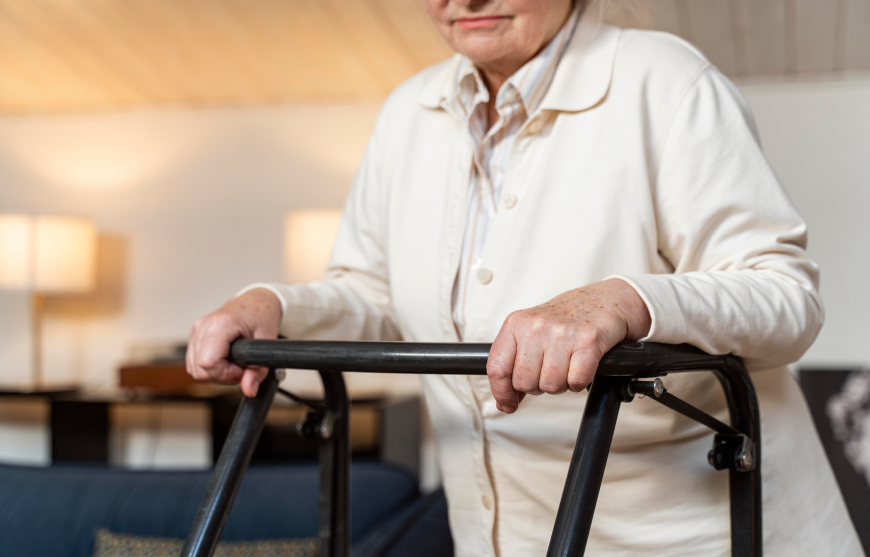
Live-in care services offer a unique and highly personalized approach to caregiving, allowing individuals to receive dedicated support in the comfort of their own homes. Unlike traditional home care, where caregivers visit for limited hours, live-in care means a caregiver lives alongside the person in need, providing around-the-clock assistance. This service is especially valuable for those who require continuous monitoring due to health concerns, mobility challenges, or cognitive conditions. Live-in care helps maintain a familiar and safe environment, reducing the stress that often comes with moving to a care facility. It also ensures that help is immediately available for daily activities and emergencies. The nature of live-in care means clients get not just physical support but also emotional companionship, which is crucial for well-being. Understanding the specifics of live-in care can help families make informed decisions that align with their loved ones’ needs and preferences.
One of the most significant advantages of live-in care services is the personalized attention clients receive. Because the caregiver is present 24/7, they can tailor support based on real-time needs, whether it’s assistance with mobility, medication reminders, or simply offering company during quiet moments. Staying at home also promotes independence and dignity, as individuals can continue to live in surroundings filled with familiar memories and comfort. Another benefit is safety—having someone always available reduces the risk of falls, accidents, or health emergencies going unnoticed. Families often find peace of mind knowing that their loved ones are not alone and that help is just steps away. Furthermore, live-in care can be more cost-effective than nursing homes or assisted living, especially when factoring in the quality of personalized service. These benefits combine to make live-in care a compelling option for many seeking quality elder care.
The scope of support provided by live-in caregivers is broad and flexible. These caregivers assist with everyday tasks like bathing, dressing, and moving around the home, ensuring clients maintain hygiene and mobility safely. Medication management is another crucial part of live-in care, with caregivers helping to organize and remind clients when to take prescriptions, avoiding missed doses or dangerous mix-ups. Meal preparation tailored to dietary needs supports nutritional health, which is vital for recovery and ongoing wellness. Additionally, caregivers often handle light housekeeping to maintain a clean and safe living environment. Transportation to medical appointments or social activities is sometimes provided, helping clients stay connected with the community. This wide range of support allows clients to focus on enjoying life without the stress of managing complex daily routines alone.
Live-in care is most beneficial for particular groups who face challenges that require consistent attention. Seniors with chronic conditions such as arthritis, heart disease, or diabetes often need constant monitoring to manage symptoms and prevent complications. Individuals recovering from surgery or serious injury can benefit from personalized rehabilitation support in a familiar setting. Those living with dementia or Alzheimer’s require specialized care that includes cognitive stimulation and safety measures to prevent wandering or confusion. Families looking to avoid the disruption and emotional toll of moving a loved one into a facility often turn to live-in care for peace of mind and reassurance. This service also suits people who prefer aging at home but need more support than occasional visits can provide. Recognizing which situations call for live-in care can help families plan accordingly and make decisions centered on their loved one’s best interests.
Choosing the right live-in care service involves several important considerations to ensure quality care and a good fit for both client and caregiver. Checking the qualifications and certifications of caregivers is essential to guarantee they have the training to meet specific health needs. Background checks and references add another layer of security, helping families feel confident about who they welcome into their home. Personality matching is often overlooked but crucial, as compatibility between client and caregiver fosters trust and comfort. Understanding the full cost of services—including hourly rates, additional fees, and payment options—helps families budget effectively. Some live-in care services may be covered partially by insurance or government programs, so exploring financial assistance can be beneficial. Interviewing providers and asking detailed questions about their care philosophy, emergency protocols, and scheduling flexibility helps set clear expectations. A thorough evaluation process leads to a positive and lasting caregiving relationship.
Clients and their families often wonder what daily life looks like when live-in care begins. Typical routines include morning hygiene assistance, medication administration, meal preparation, and scheduled rest or activities to keep clients engaged. Caregivers also respect privacy, working discreetly and maintaining boundaries to ensure clients feel comfortable in their own homes. Regular communication between the caregiver, family members, and healthcare providers keeps everyone informed about health changes or concerns. Clients may need time to adjust to having a caregiver living with them, but many find the companionship reassuring and enjoyable. Daily tasks are paced to avoid overwhelming the client while encouraging independence where possible. This steady, supportive rhythm creates a balanced environment where clients can thrive physically and emotionally.
While live-in care offers many benefits, it comes with challenges that families should consider carefully. Sharing a living space with a caregiver can sometimes feel intrusive, especially for those used to solitude. Setting clear boundaries and discussing expectations early helps avoid misunderstandings. Caregiver burnout can occur due to the demanding nature of 24-hour care, so providers typically arrange regular breaks and backup care to maintain quality. Emotional adjustments are common on both sides, as clients and caregivers build trust and rapport. Families must stay involved to monitor the situation and intervene if needed. Planning for emergencies and backup caregiving ensures that care continues uninterrupted during unexpected events. Awareness of these challenges encourages proactive solutions and smoother experiences.
The live-in care industry has seen exciting innovations that enhance both the quality and convenience of services. Technology now plays a role in monitoring clients remotely through sensors and communication devices, adding safety without intruding on privacy. Caregivers receive ongoing training in specialized areas such as dementia care or palliative support, improving the effectiveness of care. Telehealth integration allows caregivers and clients to consult medical professionals without leaving home. The increasing aging population fuels demand, encouraging more personalized and flexible care models. These developments make live-in care more accessible and adaptable to diverse client needs.
Frequently Asked Questions About Live-In Care Services
How much do live-in care services typically cost?
Costs vary based on location, level of care needed, and provider. On average, live-in care can be less expensive than nursing homes but often requires a significant investment. Some insurance plans and government programs may help offset expenses.
Are live-in caregivers available 24/7?
Yes, live-in caregivers provide continuous support, usually staying in the client’s home day and night. However, caregivers have scheduled breaks and may be rotated or backed up by other staff.
Can live-in care be customized to specific medical needs?
Absolutely. Care plans are tailored to individual health conditions, including chronic illness management, post-surgery care, or dementia support.
What happens if the caregiver needs time off?
Reputable live-in care providers arrange backup caregivers or temporary replacements to ensure uninterrupted care.
How does live-in care compare to nursing homes or assisted living?
Live-in care allows clients to remain in their own home with personalized attention, offering more comfort and independence than institutional settings.


